The rate of organizational change has accelerated dramatically over the past ten years, for many different reasons.
Sometimes workplace change must occur rapidly and without employee consultation, like during the COVID-19 pandemic. In other situations like mergers or acquisitions, changes are confidential until the contracts are signed, and the press release is published.
Corporate leaders trying to manage increasing change confirm that failing to do so adequately can be costly: Employees upset by change are generally less productive.
This blog covers how to successfully implement workplace change and help employees positively cope with change.
Approach Workplace Change With Empathy
To help your employees through the process of change and encourage them to support the change, you must first understand the emotions they may be experiencing at each phase. As soon as you announce a change to your organization, employees’ emotions will range from fear to relief and even excitement.
An array of emotional responses is expected depending on the type of change and why it’s occurring.
It’s important to remember that change is personal, and you must earn your adopters one by one. Each employee’s degree of resistance will be determined by how severe they expect the change’s impact to be on them.
Coming to accept it will depend on how much resistance they have, their coping skills and their support system.
When change and uncertainty swirl inside and outside the workplace, follow these tried and true methods to help employees embrace change and strengthen their resilience.
Create a Compelling “Why” for Every Change
Regardless of how you believe employees will react, you must set an honest, positive and compelling narrative for the changes you want to make before any anxiety, confusion or rumor take root.
Studies suggest that this is where most leaders fall short in communicating change. Momentum can fall flat when employees feel their leaders are not clear enough about what they hoped to achieve through change or their role in implementing the change.
Remember that the best way to gain the highest level of compliance and buy-in is by actively empowering your employees.
What to do:
- Celebrate successes or work done under the old system to help employees feel appreciated and encouraged to take on the next challenge.
- Explain to employees why the company needs to change and why it needs to be now.
- Discuss the pros and cons of the proposed changes to help employees feel heard and uncover possible roadblocks and resistance.
- Express what you want in terms of outcomes, not tasks.
- Share how the changes made will effectively improve the organization and individual job security.

